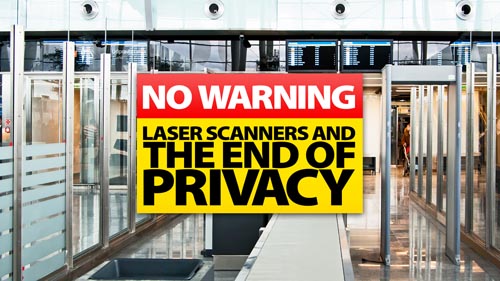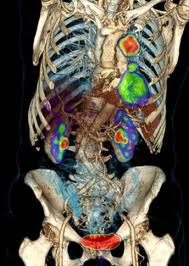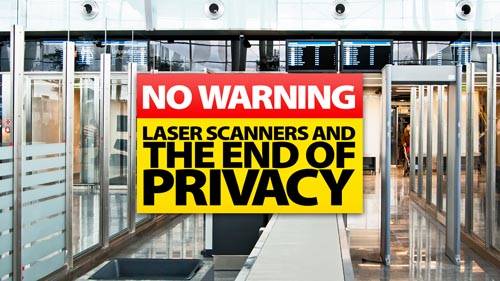New Homeland Security Laser Scanner Reads People At Molecular Level
Source: gizmodo.com

Within the next year or two, the U.S. Department of Homeland Security will instantly know everything about your body, clothes, and luggage with a new laser-based molecular scanner fired from 164 feet (50 meters) away. From traces of drugs or gun powder on your clothes to what you had for breakfast to the adrenaline level in your body—agents will be able to get any information they want without even touching you.
And without you knowing it.
 The technology is so incredibly effective that, in November 2011, its inventors were subcontracted by In-Q-Tel to work with the US Department of Homeland Security. In-Q-Tel is a company founded "in February 1999 by a group of private citizens at the request of the Director of the CIA and with the support of the U.S. Congress." According to In-Q-Tel, they are the bridge between the Agency and new technology companies.
The technology is so incredibly effective that, in November 2011, its inventors were subcontracted by In-Q-Tel to work with the US Department of Homeland Security. In-Q-Tel is a company founded "in February 1999 by a group of private citizens at the request of the Director of the CIA and with the support of the U.S. Congress." According to In-Q-Tel, they are the bridge between the Agency and new technology companies.Their plan is to install this molecular-level scanning in airports and border crossings all across the United States. The official, stated goal of this arrangement is to be able to quickly identify explosives, dangerous chemicals, or bioweapons at a distance.
The machine is ten million times faster—and one million times more sensitive—than any currently available system. That means that it can be used systematically on everyone passing through airport security, not just suspect or randomly sampled people.
Analyzing everything in real time
But the machine can sniff out a lot more than just explosives, chemicals and bioweapons. The company that invented it, Genia Photonics, says that its laser scanner technology http://www.geniaphotonics.com/s able to "penetrate clothing and many other organic materials and offers spectroscopic information, especially for materials that impact safety such as explosives and pharmacological substances." [PDF]
Formed in Montreal in 2009 by PhDs with specialties in lasers and fiber optics, Genia Photonics has 30 patents on this technology, claiming incredible biomedical and industrial applications—from identifying individual cancer cells in a real-time scan of a patient, to detecting trace amounts of harmful chemicals in sensitive manufacturing processes.
[...]
So not only can they scan everyone. They would be able to do it everywhere: the subway, a traffic light, sports events... everywhere.
How does it work?
The machine is a mobile, rack-mountable system. It fires a laser to provide molecular-level feedback at distances of up to 50 meters in just picoseconds. For all intents and purposes, that means instantly.
The small, inconspicuous machine is attached to a computer running a program that will show the information in real time, from trace amounts of cocaine on your dollar bills to gunpowder residue on your shoes. Forget trying to sneak a bottle of water past security—they will be able to tell what you had for breakfast in an instant while you’re walking down the hallway.
[...]
According to the undersecretary for science and technology of the Department of Homeland Security, this scanning technology will be ready within one to two years, which means you might start seeing them in airports as soon as 2013.
In other words, these portable, incredibly precise molecular-level scanning devices will be cascading lasers across your body as you walk from the bathroom to the soda machine at the airport and instantly reporting and storing a detailed breakdown of your person, in search of certain "molecular tags".
Going well beyond eavesdropping, it seems quite possible that U.S. government plans on recording molecular data on travelers without their consent, or even knowledge that it’s possible—a scary thought. While the medical uses could revolutionize the way doctors diagnose illness, and any technology that could replace an aggressive pat-down is tempting, there’s a potential dark side to this implementation, and we need to shine some light on it before it’s implemented.
[...]
Read the full article at: gizmodo.com
Top Image: Source






















